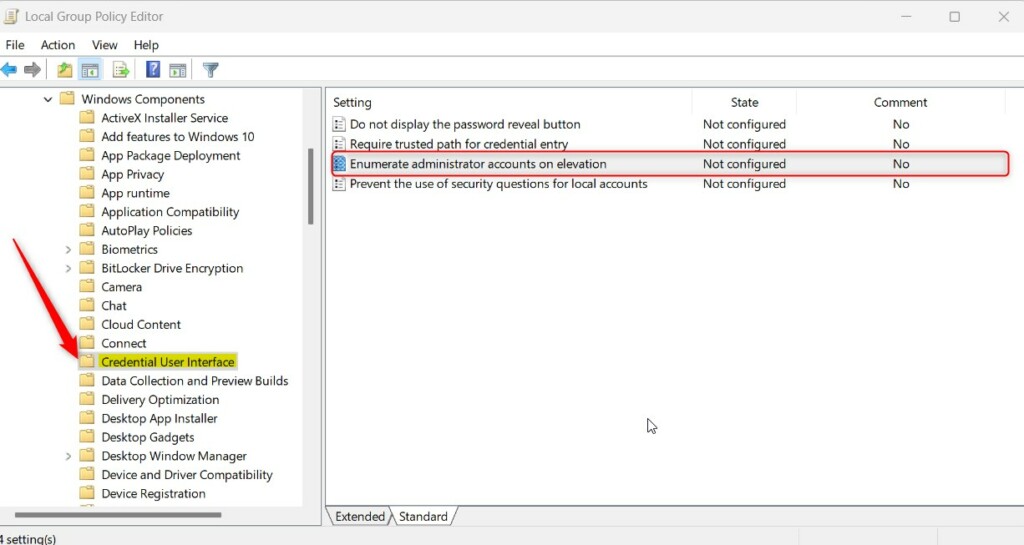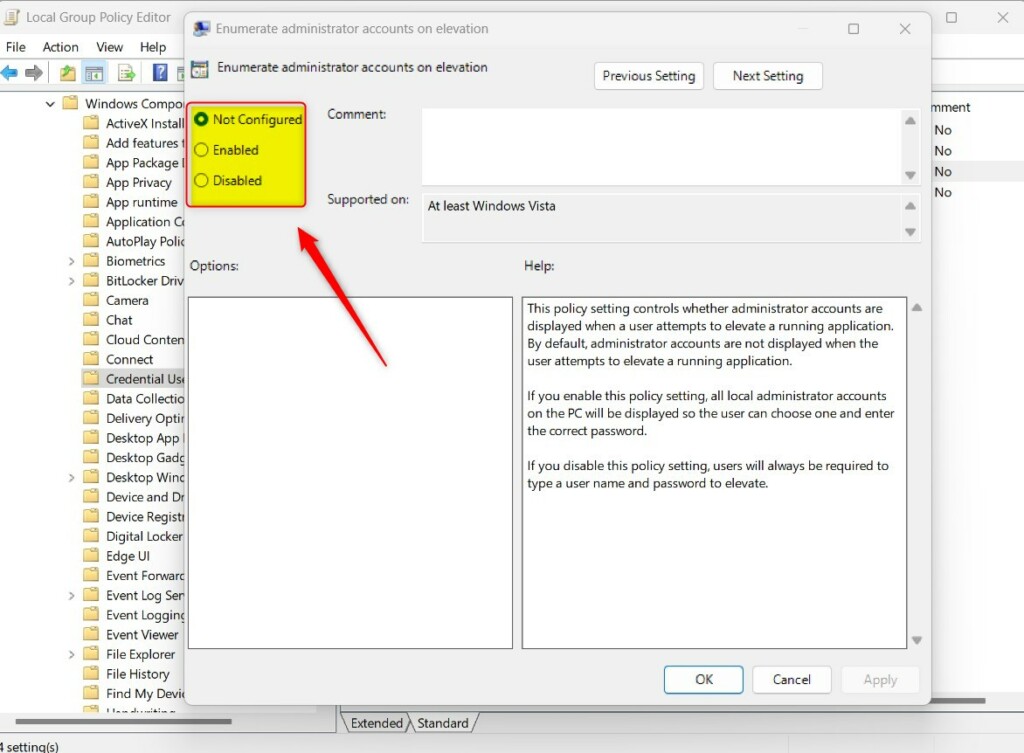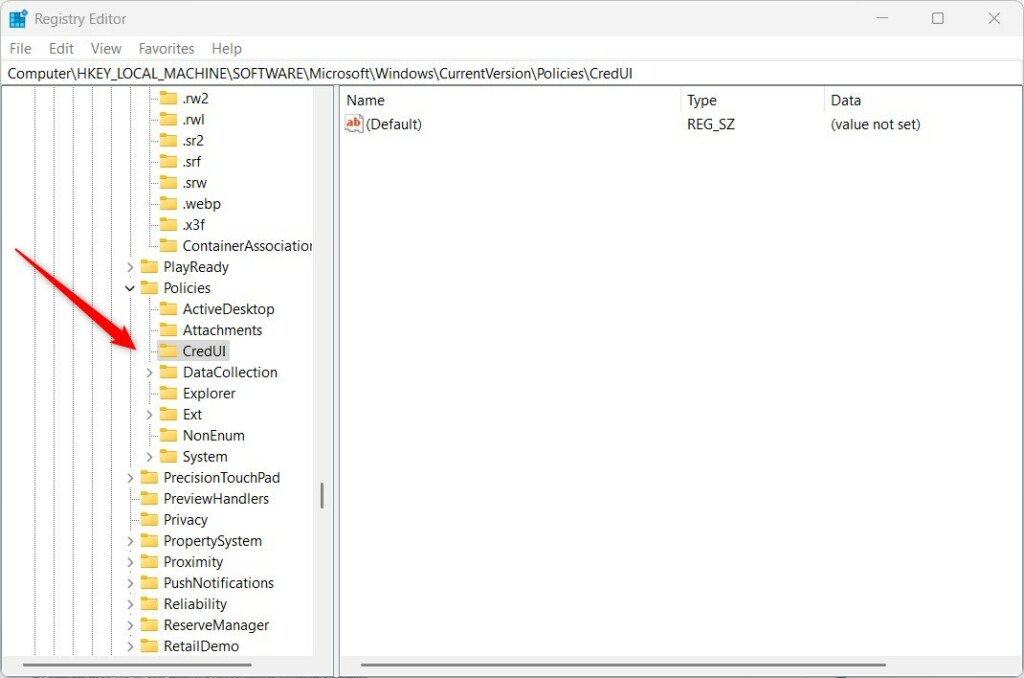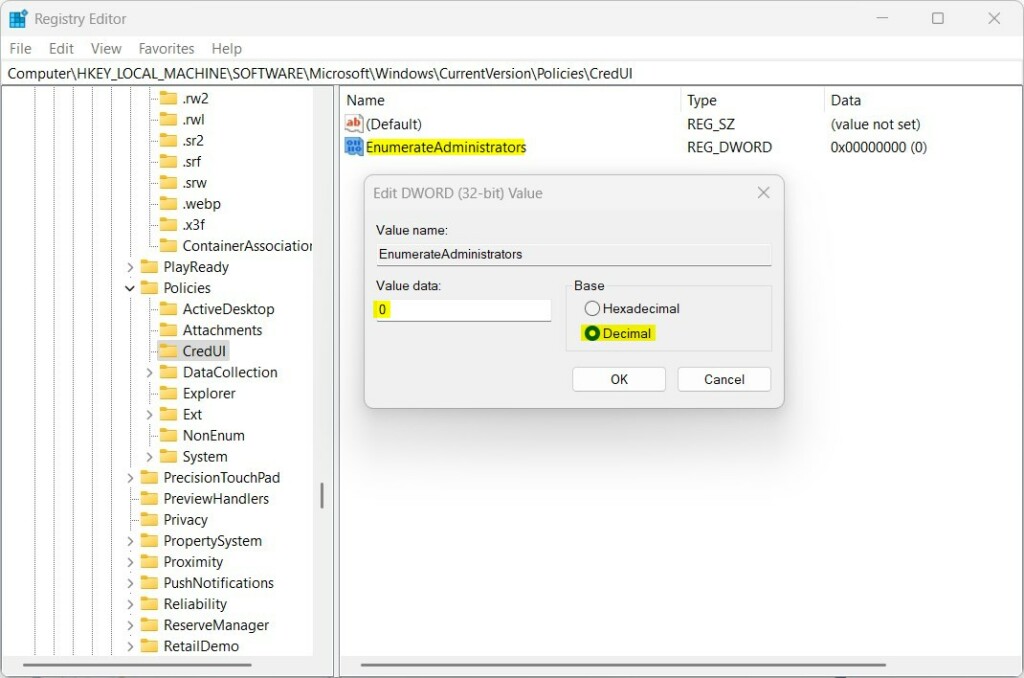This article explains turning on or off displaying the administrator accounts in the UAC prompt for Standard users in Windows 11.
Windows comes with User Account Control (UAC) feature that helps prevent potentially harmful programs from changing your computer by confirming that an administrator is making the changes.
To ensure that changes that require administrative privileges are done only by the administrator, Windows prompts and displays a UAC window requiring the administrator’s credentials when standard users run tasks or make changes only the administrator should do.
The Enumerate administrator accounts on elevation policy setting controls whether administrator accounts are displayed when standard users attempt to run as administrator.
If you enable this policy setting, all local administrator accounts on the PC will be displayed so the user can choose one and enter the correct password.
If you disable this policy setting, users must always type a user name and password to elevate.
Show or hide the administrator in the UAC prompt for standard users
As mentioned above, Windows will display all the administrator accounts in the UAC prompt for standard users before running tasks or programs only the administrator can perform.
The UAC prompt will include all the local administrator accounts in the prompt. Standard users can choose from among the listed administrator accounts to type in the correct password to continue.
Here’s how to show or hide the administrator accounts from displaying in the UAC prompts for standard users.
First, open the Local Group Policy Editor.
Then expand the following folders Computer Configuration > Administrative Templates > Windows Components > Credential User Interface.
Computer Configuration -> Administrative Templates -> Windows Components -> Credential User Interface
Next, click on the Credential User Interface folder on the left panel, and double-click the setting on the right called “Enumerate administrator accounts on elevation” to open.

When the setting window opens, select one of the options:
- Not Configured – Same as Disabled. Administrator accounts are not displayed.
- Enabled – All administrator accounts are displayed on the UAC prompts.
- Disabled – Users must type in user name and password to elevate.

Save your settings and restart your computer for the changes to apply.
Turn on or off displaying administrator accounts on the UAC prompt via Windows Registry Editor
Yet another way to turn on or off displaying the administrator accounts on the UAC prompt for standard users in Windows is to use the Windows Registry Editor.
If you can’t open the Local Group Policy Editor, use the Windows Registry editor instead.
Open the Windows Registry, and navigate to the folder key below.
HKEY_LOCAL_MACHINE\SOFTWARE\Microsoft\Windows\CurrentVersion\Policies\CredUI
If you don’t see the CredUI folder key, right-click on the Policies key, then create the subkey (CredUI) folders.

Right-click the CredUI folder key’s right pane and select New -> DWORD (32-bit) Value. Type a new key named EnumerateAdministrators.
Double-click the new key item name (EnumerateAdministrators) and make sure the Base option is Decimal, and then update the Value data:
- To hide the administrator accounts on the UAC prompt, type 0.
- To display all administrator accounts on the UAC prompt, type 1.

Save your changes and restart your computer.
That should do it!
Conclusion:
- Enabling or disabling the administrator account display on the UAC prompt for standard users in Windows 11 provides additional control over administrative privileges.
- This post detailed two methods to achieve this: the Local Group Policy Editor and the Windows Registry Editor.
- The described steps allow users to customize the UAC prompt to show or hide administrator accounts, providing flexibility and security for the Windows 11 environment.
- Feel free to engage in the comments section below if there are any errors or further contributions to this topic.

Leave a Reply